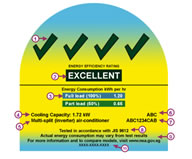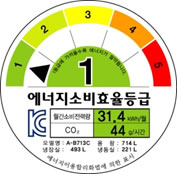Energy Saving/Energy Efficiency
Energy saving origin:
As the global population is increasingly using energy (such as oil, electricity, …..), countries around the world are facing the growing energy use of energy, in addition to open source (such as the addition of power plants to extract more oil, develop new Energy….), also began to use the throttling method to cope with these growing energy use pressures. (If the policy requires manufacturers to design low-cost products).
However, in addition to saving energy growth, there is another reason to reduce greenhouse gas emissions caused by continuous use of energy, such as carbon dioxide, carbon chloride, methane, and nitrous oxide. The rate of destruction of the Earth’s ecology by ozone.
Implementation Country:
| Asia | America | Europe | Oceania |
| China | Brazil | EU | Australia |
| Hong Kong | Canada | Ireland | New Zealand |
| India | Mexico | Russia | |
| Iran | USA | ||
| Israel | |||
| Japan | |||
| Korea | |||
| Philippe | |||
| Singapore | |||
| Taiwan |
Various energy saving introductions:
1、 Energy Star

In order to save energy and reduce greenhouse gases, the ENERGY STAR program launched in 1992 by the US Environmental Protection Agency (EPA) and the Energy Agency (DOE) has covered 48 product categories (including home appliances, lamps). , audio and video products, office equipment, etc.). Since its implementation, it has been very effective and has become an international standard.
2、CEC (California Energy Commission)
Taking electrical products as an example, the Appliance Efficiency Program, which was developed in 2000, has been developing new test and control methods. The CEC-400-2005-012 Appliance Efficiency Regular, released in May 2005, is an energy-saving, uninterrupted reform and requirement in the United States. It’s just that California’s energy policy is mandatory than other states. The California Energy Commission has developed many legal requirements, education and training, encouragement and restriction methods, etc. since the 1970s.
3、 EER

Since 1992, Europe has developed 92/75/EEC energy comparison stamps for refrigerators, air conditioners, washing machines, clothes dryers, dishwashers, ovens, lighting products, liquid heaters (electric kettles, water storage electric water heaters, etc.). Later, in 2001, the office equipment program in the ENERGY STAR labeling program was officially promoted.
4、 E3 programs

●E 3 programs: An environmental policy for energy saving and greenhouse gas reduction for Australia and New Zealand.
● E 3 programs : Includes mandatory energy conservation policies including Energy labeling and MEPS.
● Energy Labelling: Mainly for the mandatory labeling of energy standards for products such as air conditioners and refrigerators with compressors since 1999. This policy is mostly mandatory household appliances.
● MEPS (minimum energy performance standards) : The requirements for Energy Labeling controlled appliances and the latest requirements for External Power Supply are to comply with the minimum power consumption standards, and will continue to meet the minimum power consumption standards for fluorescent lamps and ballasts, audio and video products. MEPS does not have any logo. Request, but go to the official unit to log in to their products and home information.
5、China – Energy Conservation Mark System + Energy Label System


The Republic of China Energy Conservation Law, which was officially implemented on January 1, 1998, China has slowly begun to demand savings in product and energy use. On March 1, 2005, the supporting energy efficiency labeling management method was announced. Refrigerators, air conditioners, electric washing machines, ballasts for metal halide lamps require the labeling of energy efficiency labels. As for the energy-saving stamp, it has not become a mandatory decree, but the products to be sold to official units require The energy-saving stamp can only be used for bidding.
6、Singapore

Name : Energy label and MEPS
Mandatory : YES
Product Scope : Air Conditioning, Refrigerator, Dryer
7、Korea

Name :Energy Efficiency Standards & Labeling Program
Mandatory : YES
Product Scope : 35 items such as refrigerators, air conditioners, dishwashers, vacuum cleaners, electric fans, transformers, chargers, etc.
8、Korea


Name :e-Standby Program
Mandatory : YES
Product Scope: 22 items such as TV, computer, list machine, fax, stereo, microwave oven and radio.
9、Korea


Name :High –efficiency appliance Certification program
Mandatory : No (Voluntary)
Product Scope : 41 items such as 16mm fluorescent lamp, 26mm32w fluorescent lamp, LED traffic signal, uninterruptible power supply, transformer, etc.
